#it’s like Asians have been absent from media discussion for my entire life
Text
When tumblr starts seeming “huh not as bad as it used to be” I can always remember to open the notes on any popular discourse post and that misconception is wiped from my brain entirely :)
#is joyriding tumblr really reading post notes under the stop Asian hate tag?#yes it is#love reading what white people have to say about the personal effects of race-based fetishization lol#what irks me sometimes is people going:#“I agree!!!#and it adds absolutely nothing to the discussion#like? girl I’m glad you *agree* racism is wrong…#go give us nothing lol#agreeing that something is wrong is literally the standard of decency#anyway that’s the only political tag I read because#it’s like Asians have been absent from media discussion for my entire life#(other than anime and kpop)#(which were both unacceptable in the eyes of society until very recently)#ANYWAY#It’s like oh yeah Asians exist ?? I forgot#which I’m exaggerating of course#but tdlr; Asians finally exist in the eyes of the US and it’s entertaining seeing what opinions people have probably held in for years#including people thinking it’s anti racist and super progressive to just comment *i agree 1000%*#this isn’t a callout post or anything#If you’re seeing this you’re probably cool anyway#LOTR and HBO War are not problematic fandoms in my experience#welp I’m probably gonna delete this in a few hours anyway#not art#gonna delete later#political
4 notes
·
View notes
Link
Thread: I was sent this and felt the need to thread it here on Twitter. It will be long. It is purported to be an anonymous, open letter from a professor at UK Berkeley in the History Department. The only comment I will make is to say it is worth every moment of the read.
C Berkeley History Professor's Open Letter Against BLM, Police Brutality and Cultural Orthodoxy
Dear profs X, Y, Z
I am one of your colleagues at the University of California, Berkeley. I have met you both personally but do not know you closely, and am contacting you anonymously, with apologies. I am worried that writing this email publicly might lead to me losing my job, and likely all future jobs in my field.
In your recent departmental emails you mentioned our pledge to diversity, but I am increasingly alarmed by the absence of diversity of opinion on the topic of the recent protests and our community response to them.
In the extended links and resources you provided, I could not find a single instance of substantial counter-argument or alternative narrative to explain the under-representation of black individuals in academia or their over-representation in the criminal justice system. The explanation provided in your documentation, to the near exclusion of all others, is univariate: the problems of the black community are caused by whites, or, when whites are not physically present, by the infiltration of white supremacy and white systemic racism into American brains, souls, and institutions.
Many cogent objections to this thesis have been raised by sober voices, including from within the black community itself, such as Thomas Sowell and Wilfred Reilly. These people are not racists or 'Uncle Toms'. They are intelligent scholars who reject a narrative that strips black people of agency and systematically externalizes the problems of the black community onto outsiders.
Their view is entirely absent from the departmental and UCB-wide communiques.
…
A counternarrative exists. If you have time, please consider examining some of the documents I attach at the end of this email.
Overwhelmingly, the reasoning provided by BLM and allies is either primarily anecdotal (as in the case with the bulk of Ta-Nehisi Coates' undeniably moving article) or it is transparently motivated. As an example of the latter problem, consider the proportion of black incarcerated Americans. This proportion is often used to characterize the criminal justice system as anti-black. However, if we use the precise same methodology, we would have to conclude that the criminal justice system is even more anti-male than it is anti-black.
Would we characterize criminal justice as a systemically misandrist conspiracy against innocent American men? I hope you see that this type of reasoning is flawed, and requires a significant suspension of our rational faculties. Black people are not incarcerated at higher rates than their involvement in violent crime would predict. This fact has been demonstrated multiple times across multiple jurisdictions in multiple countries. And yet, I see my department uncritically reproducing a narrative that diminishes black agency in favor of a white-centric explanation that appeals to the department's apparent desire to shoulder the 'white man's burden' and to promote a narrative of white guilt.
If we claim that the criminal justice system is white-supremacist, why is it that Asian Americans, Indian Americans, and Nigerian Americans are incarcerated at vastly lower rates than white Americans? This is a funny sort of white supremacy. Even Jewish Americans are incarcerated less than gentile whites. I think it's fair to say that your average white supremacist disapproves of Jews. And yet, these alleged white supremacists incarcerate gentiles at vastly higher rates than Jews. None of this is addressed in your literature. None of this is explained, beyond hand-waving and ad hominems. "Those are racist dogwhistles". "The model minority myth is white supremacist". "Only fascists talk about black-on-black crime", ad nauseam. These types of statements do not amount to counterarguments: they are simply arbitrary offensive classifications, intended to silence and oppress discourse. Any serious historian will recognize these for the silencing orthodoxy tactics they are, common to suppressive regimes, doctrines, and religions throughout time and space. They are intended to crush real diversity and permanently exile the culture of robust criticism from our department.
Increasingly, we are being called upon to comply and subscribe to BLM's problematic view of history, and the department is being presented as unified on the matter. In particular, ethnic minorities are being aggressively marshaled into a single position. Any apparent unity is surely a function of the fact that dissent could almost certainly lead to expulsion or cancellation for those of us in a precarious position, which is no small number.
…
The vast majority of violence visited on the black community is committed by black people. There are virtually no marches for these invisible victims, no public silences, no heartfelt letters from the UC regents, deans, and departmental heads. The message is clear: Black lives only matter when whites take them. Black violence is expected and insoluble, while white violence requires explanation and demands solution.
Please look into your hearts and see how monstrously bigoted this formulation truly is.
No discussion is permitted for nonblack victims of black violence, who proportionally outnumber black victims of nonblack violence. This is especially bitter in the Bay Area, where Asian victimization by black assailants has reached epidemic proportions, to the point that the SF police chief has advised Asians to stop hanging good-luck charms on their doors, as this attracts the attention of (overwhelmingly black) home invaders.
Home invaders like George Floyd. For this actual, lived, physically experienced reality of violence in the USA, there are no marches, no tearful emails from departmental heads, no support from McDonald's and Wal-Mart.
For the History department, our silence is not a mere abrogation of our duty to shed light on the truth: it is a rejection of it.
…
Most troublingly, our department appears to have been entirely captured by the interests of the Democratic National Convention, and the Democratic Party more broadly. To explain what I mean, consider what happens if you choose to donate to Black Lives Matter, an organization UCB History has explicitly promoted in its recent mailers. All donations to the official BLM website are immediately redirected to ActBlue Charities, an organization primarily concerned with bankrolling election campaigns for Democrat candidates. Donating to BLM today is to indirectly donate to Joe Biden's 2020 campaign. This is grotesque given the fact that the American cities with the worst rates of black-on-black violence and police-on-black violence are overwhelmingly Democrat-run. Minneapolis itself has been entirely in the hands of Democrats for over five decades; the 'systemic racism' there was built by successive Democrat administrations.
…
Given the direction our history department appears to be taking far from any commitment to truth, we can regard ourselves as a formative training institution for this brand of snake-oil salespeople. Their activities are corrosive, demolishing any hope at harmonious racial coexistence in our nation and colonizing our political and institutional life. Many of their voices are unironically segregationist.
MLK would likely be called an Uncle Tom if he spoke on our campus today. We are training leaders who intend, explicitly, to destroy one of the only truly successful ethnically diverse societies in modern history. As the PRC, an ethnonationalist and aggressively racially chauvinist national polity with null immigration and no concept of jus solis increasingly presents itself as the global political alternative to the US, I ask you: Is this wise? Are we really doing the right thing?
As a final point, our university and department has made multiple statements celebrating and eulogizing George Floyd. Floyd was a multiple felon who once held a pregnant black woman at gunpoint. He broke into her home with a gang of men and pointed a gun at her pregnant stomach.
He terrorized the women in his community. He sired and abandoned multiple children, playing no part in their support or upbringing, failing one of the most basic tests of decency for a human being. He was a drug-addict and sometime drug-dealer, a swindler who preyed upon his honest and hard-working neighbors.
And yet, the regents of UC and the historians of the UCB History department are celebrating this violent criminal, elevating his name to virtual sainthood. A man who hurt women. A man who hurt black women. With the full collaboration of the UCB history department, corporate America, most mainstream media outlets, and some of the wealthiest and most privileged opinion-shaping elites of the USA, he has become a culture hero, buried in a golden casket, his (recognized) family showered with gifts and praise. Americans are being socially pressured into kneeling for this violent, abusive misogynist. A generation of black men are being coerced into identifying with George Floyd, the absolute worst specimen of our race and species. I'm ashamed of my department. I would say that I'm ashamed of both of you, but perhaps you agree with me, and are simply afraid, as I am, of the backlash of speaking the truth. It's hard to know what kneeling means, when you have to kneel to keep your job.
It shouldn't affect the strength of my argument above, but for the record, I write as a person of color. My family have been personally victimized by men like Floyd. We are aware of the condescending depredations of the Democrat party against our race. The humiliating assumption that we are too stupid to do STEM, that we need special help and lower requirements to get ahead in life, is richly familiar to us. I sometimes wonder if it wouldn't be easier to deal with open fascists, who at least would be straightforward in calling me a subhuman, and who are unlikely to share my race.
The ever-present soft bigotry of low expectations and the permanent claim that the solutions to the plight of my people rest exclusively on the goodwill of whites rather than on our own hard work is psychologically devastating.
No other group in America is systematically demoralized in this way by its alleged allies. A whole generation of black children are being taught that only by begging and weeping and screaming will they get handouts from guilt-ridden whites.
No message will more surely devastate their futures, especially if whites run out of guilt, or indeed if America runs out of whites. If this had been done to Japanese Americans, or Jewish Americans, or Chinese Americans, then Chinatown and Japantown would surely be no different to the roughest parts of Baltimore and East St. Louis today. The History department of UCB is now an integral institutional promulgator of a destructive and denigrating fallacy about the black race.
3 notes
·
View notes
Text
Lesson 15, Task 2: What has influenced me?
Culture is the language, beliefs, values, norms, behaviours, and material objects that are passed on to future generations of society; while material culture, specifically consists of items within a culture that you can taste, touch, and feel. In a generation infused by mass and social media and at the height of globalization, it’s not hard to understand why a person would be influenced by cultures from around the world. Especially, in the form of material culture as it seems to be the most accessible and appealing to our sensory overstimulated society. It is well known that through processes like socialization our own personal cultures shape and influence us as people. But how often do we consider the impact other cultures around us have, particularly in a country like Canada that defines itself as a cultural mosaic and which in 1988 passed the Canadian Multicultural Act; the first national multiculturalism law in the world? I will be discussing just that in this essay and looking at how cultural aspects such as entertainment, fashion, food, architecture, and leisure activities outside of my own culture influence me.
Entertainment
Whether it's by watching Senegalese movies, listening to Balkan music, playing Japanese video games, gazing at Incan sculptures, or reading Soviet novels and multicultural Sufi poetry; entertainment makes a large part of the “foreign” cultures I consume thanks to the extent of mass and social media. Given my own diverse ethnic and cultural background, I have always been interested in different cultures. One of the most influential sources of my interest came in the form of Mexican and Hispanophone-South American telenovelas. Given that my parents come from Cuba and Brazil, respectfully, to someone looking from an outsider prospective it may be confusing how i.e. Mexican, Peruvian, or Argentinean cultures are that different from mine. However, Latin America is neither a cultural nor a racial monolith, and despite countries like Cuba and Mexico speaking the same language on a national level, they are as different from each other as Canada and Jamaica. Although, both Mexico and Cuba were colonized by the same European colonizers, the Spaniards; their colonial and post-colonial histories evolved uniquely (Collier, Simon, Thomas Skidmore, Harold Blakemore, 1992, pg. 25). Watching Mexican telenovelas as a child introduced me to these differences, especially on a racial and cultural level. In Cuba the majority of the population descends from Europe, Africa, and to a lesser extend China; thus most Cubans are either white, black, black-white biracials (most often multigenerational), or Asian (McAuslan, 2010, pg. 523). Cuba and Mexico, as the rest of the Americas were first both inhabited by Native Americans before the Spaniards came. However, in Cuba diseases and slavery of the Indigenous population almost entirely wiped them out in the first couple decades of the Spaniards arrival (McAuslan, 2010, pg. 408). Mexico on the other hand had one of the largest Native American populations in the entire Americas, and to this day they and their descendants still make a large part of Mexico’s demographics (Clarke, 2018, pg. 22-24). Cuba and Mexico both share a unique history in that the Spaniards, as the French and Portuguese, were more open to mixing with the non-white populations in their colonies, and both countries have large mixed-race populations. Nevertheless, unlike in Mexico where the mixture was largely between Europeans and Native Americans, in Cuba it was largely between Europeans and Africans who were brought to the island as slaves (Clarke, 2018, 22-24; see also Collier et al., 1992; McAuslan, 2010, pg. 408). Also, because of racist policies that encouraged post-colonial Spanish and other European immigrants to the country, Cuba’s white population was much larger than that of Mexico, where the white population is largely concentrated in the upper-class (McAuslan, 2010, pg. 409-413). Cuba, however, gone through a communist revolution largely over-threw and exiled the upper- and middle-class white population, and so growing up in the country I was used to being around poor white, black, Asian, and mixed people. This was unlike what I saw in Mexican telenovelas, whereas the main cast was largely white, often portraying the upper-class, many of the minor characters and extras would be people of visible Native ancestry (Moreno, 2017, March 13). At first it influenced my curiosity, as I was used to seeing white people speaking Spanish, but I was not used to seeing people with such prominent Indigenous American features speaking the language. However, later on I continued to see a trend: the maids, butlers, and poorest characters in these telenovelas would often be the ones who looked to be entirely Native in ancestry. Watching Venezuelan telenovelas I started to see this pattern too, however unlike Mexico, with black characters playing the poorest and least significant roles, and once again white people and predominately white mixed-race people playing the leads and recurring characters, typically those in the middle and upper class. Contemplating on this led me to have a deeper interest in both sociology and history. It had a massive impact on me, because I began to see the patterns in my own culture’s media. This is especially true in Brazilian tv which follows a similar pattern, and where white Brazilians make up the majority of the cast and most important characters, while black Brazilians play less significant and often negatively stereotyped roles. It pushed me to learn about the colonial history of Latin America and how the Spaniards, Portuguese, and French all created caste systems which placed European/white descendants at the top of the pyramid, mixed people in the middle, and Black & Indigenous people at the bottom. (Collier et al., 1992, pg. 22). It taught me that in much of Latin America, things had changed very little since the colonial era and that socio-economic status was heavily influenced by race (Collier et al., 1992, pg. 23-26). This is the antithesis of what many Latin American countries claim, describing their nations as multiracial and multicultural paradises, absent of the racism found in the United States (Collier et al., 1992, pg. 34). Although these polarizations were always present in Brazilian and even Cuban television shows, the larger amount of white and black people in Cuba and Brazil overall interacting positively daily, and the slightly large presence of non-white people in the media of both of these countries, had always given me the impression that what I was taught about racial harmony was true. It was not until seeing these striking racial/social contrasts in Mexican telenovelas that I began to look into the problems of my own culture and beginning my journey into sociology.






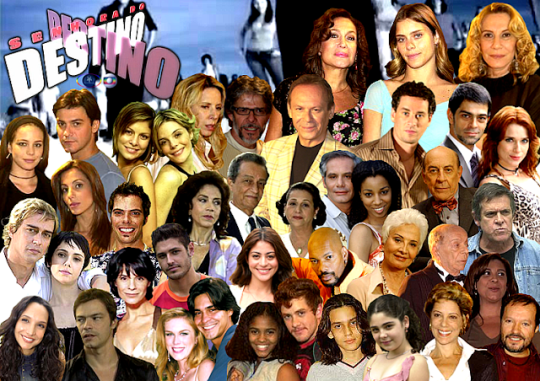
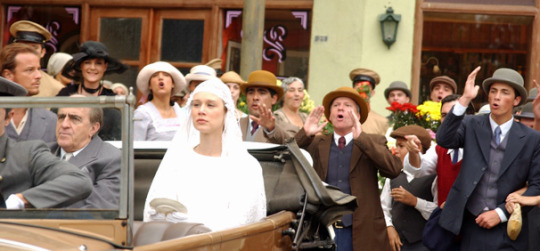
Caption: Typical cast in Telenovelas from different Latin American countries. Most actors, especially main actors are white of European descent. Light-skinned mixed descendants are the second most prominent in certain countries, in some others even they are few. People of predominate African and Indigenous ancestry are usually secondary characters or extras, often playing negative or non-essential roles.


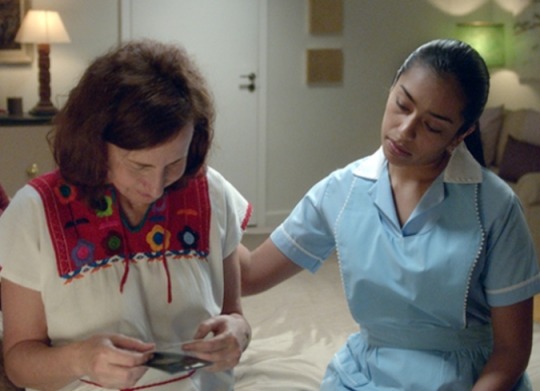
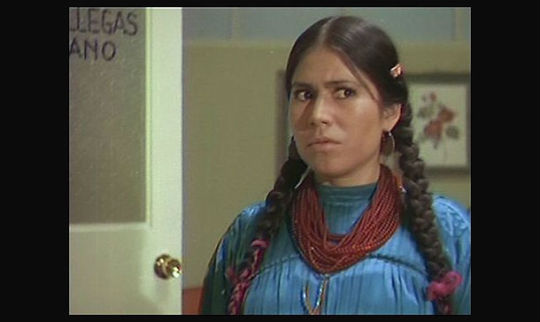





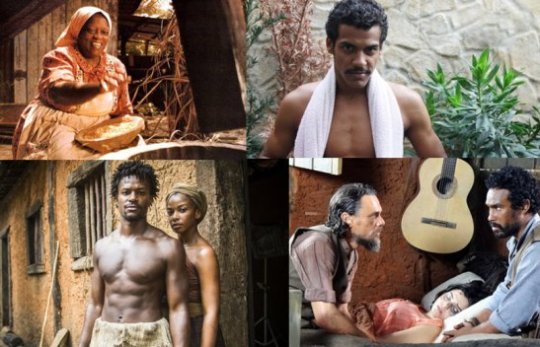




Caption: People of predominate African and Indigenous ancestry typically play maids, criminals, slaves, “non-acculturated” Indian roles (to stress that they’re “unlike us”), and other stereotypical roles. Or the role of the supporting friend to the white character. Black females whenever playing an important role, especially in Brazilian soap operas, are often portrayed as being “saved” from their condition once they find their white prince-charming, a narrative that has its origins in colonial literature.
Sometimes even stories focusing on slavery or colonization have non-Indigenous/Black actors playing them.



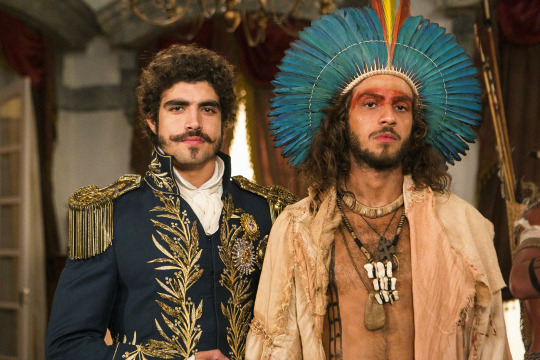

Caption: The first telenovela “White Slave” was about trans-atlantic slavery in Colombia, but the whole show was focused on a rich white girl who was sold into slavery and raised by formerly enslaved Africans who escaped to Maroon settlements. The rest of the examples are of white or light skinned-mixed-race people playing black and Indigenous characters.
Fashion
It’s not a surprise that Canada is cold, especially in the winter time, and because of this Canadians are well prepared for such a climate. The piece of fashion that I have incorporated into my own fashion while living in Canada is that of the toque (Cornell, 2012, Sept. 10). The toque is a national symbol of Canada and most Canadians wear them throughout winter. It is believed that the fashion of wearing a toque in this country started with the Bois-Doi-Couers, fur-trappers, often of Metis descent, who made up the first generation of contact between European and Indigenous people (Wikipedia contributors, 2018, June 6). This is why I think it is a quintessential item in helping me adapt both to the climate and the culture/history of this nation. The toque has had a great impact in my life by keeping me warm from the harshness of Canadian winter.


Caption: A Catalan French man wears a type of Phrygian styled hate popular in Southern France and Spain, the influence for the Canadian toque.
Food
Food? What can I tell you about my love for food and the various cuisines of the world. The GTA is one of the most multicultural regions of the world and it has one of the most diverse selections of "ethnic" restaurants, spanning from Uyghur all the way to Chifa (Chinese-Peruvian) dining establishments. Wherever I go, I can't stop myself from being influenced by ingredients and dishes from around the world, for example using loads of Angolan piri piri hot sauce in most of my meals. Toronto like my mother's native Sao Paulo share two of the largest Italian diasporas in the world, and because of this I have greatly been influenced by pasta (Veccia, 1984, pg. 4-12). Due to Italian immigration, pasta has become a staple of the cuisine of Sao Paulo, and it has impacted me greatly because it's been one of the main sources of carbohydrates in my daily life (Coughlin, 2013, Sept. 13). Interestingly enough, there are many legends and theories as to how pasta got to Italy, ranging from Marco Polo introducing it in the Middle Ages, towards the more accepted belief of early Nomadic Arabs spreading it into Europe (Avery, 2012, July 26). Which shows how vastly different cultures have been interacting with each other for hundreds to thousands of years via things like trade routes.
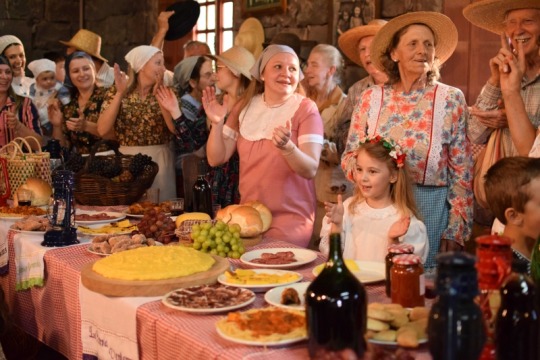
Caption: Brazilians of Italian descent during a folk festival. WIth them are popular dishes brought to Brazil by immigrants from Italy such as pastas, polenta, and cured meats.
Architecture
Studies show that architecture can have both an emotional and psychological impact on us, and I have personally known this to be true (Weller, 2016, Sept. 15). Growing up in Cuba I live on a block where houses were all attached to each other and the road was narrow. Whenever you would walk out of your house the whole street was socializing with each other; people played dominoes, had street parties, and regularly sat around socializing outside as fellow neighbours. This scenario gave me a sense of community, belonging, and a frequent dose of socialization as a child. Then, for some time, I moved to Miami in the United States to live with cousins. They lived in suburbs with wide streets, long back-yards, and houses that were quite a spatial distance from each other. These suburban designs made me feel very isolated and distanced from everyone living around me outside of my family. There wasn't the same feeling of community I felt in the densely populated neighbourhoods in Cuba, where although it could sometimes feel crowded when all the neighbours were out, it always gave me a sense of social belonging and a sense of knowing my neighbour on an intimate level. Later on, living in Canada and working in the construction industry, had once again given me a chance to encounter something that I saw as North American, due to the reason that such suburbs do not exist in my own country. However, this time around it was not the suburbs themselves, but the exurbs; which as we have learned in this unit are the result of greater urban sprawl, and a headache on our environment according to some environmentalists such as David Suzuki. In the exurbs, such as Milton, I discovered something else that had a negative psychological impact on me; tract housing. Although in Canada they're not as bad as some parts of the U.S. or places like China and the UK, they have left a horrid impression on me, due to the fact that most of them look the same and are designed in the same way. It gives a type of robotic, cold, homogenous, collective feel to them. Paradoxal, considering the very non-collective makeup of society in these types of environments (despite how they're portrayed in the media) (Preswitch, 2017, March 16).


Caption: Tract housing. This is depressing.

Caption: Markham, Ontario.
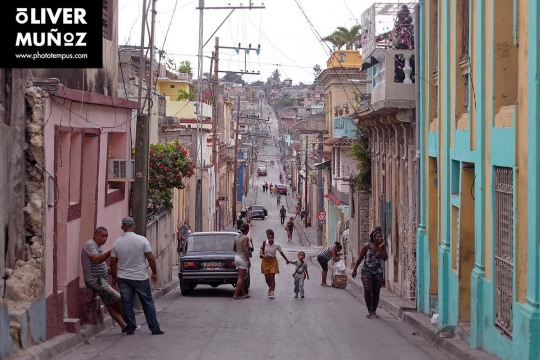
Caption: Most streets both in urban and rural Cuba are close together.


Caption: There are some rural areas with very isolated types of houses, called Bohios, with large plantations or fields for farming. These are usually occupied by descendants of Spaniard/other European peasants who were encouraged to settle in Cuba in rural areas in the 19th century, in order to inhabit areas that were very isolated and were often perfect environments for “Maroon/Palenque” runaway slave) settlements. Most of these farmers and their families have settled in less isolated rural areas where housing is similar to the urban areas or in proper urban areas.
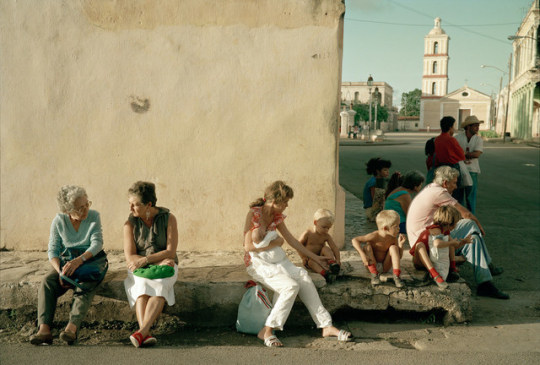

Caption: Most Cubans socialize daily on their neighbourhood street or block. Since until very recently the state owned all property, many people began making businesses from their homes. So often a local business is run on the street or inside the house of a neighbour, thus the person running the business will mostly have clients who are neighbours.


Caption: Cubans hang on their street daily. Often playing card games and dominoes in front of their houses, on the street.

Caption: Community parties and Lukumi (Afro-Cuban deity) and Catholic saint processions occur frequently among neighbours/people on the same block.
Leisure
Leisure activities with origins from around the world are another way you can experience the GTA and Canada as a whole. It's difficult to not to know an urban-dweller that hasn't partook in Japanese Karate, Afro-Brazilian Capoeira, or Hindu Yoga, and I have partaken in various forms of all three activities myself. However, the most influential forms of past-time, would have to be two from my own childhood, both activities have origins in China but have had different impacts on me growing up. Cuba has a large Chinese descended population originating from indentured labourers that were brought to the island at the end of the slave trade (Lopez, 2013, June 10, pg. 50-52). Most Cubans of Chinese ancestry have assimilated into the general population, but many of their cultural traits were infused into the general culture of the nation. Growing up in Cuba, one my best-friends was a Cuban of Chinese ancestry and he and I would often play Mahjong, which is a tile-based game that was developed in China during the Qing dynasty (Lam, 2017, July 28, pg. 11). I've mentioned before Cubans love playing dominoes, and mahjong has many similarities to dominoes. This impacted me because it created a lot of fond memories, and the nostalgia of them hit me every time I play the game in the present. Another example of a Chinese leisure activity that has a lot of popularity in Cuba is that of Tai Chi, which has origins in Taoist philosophy (Wong, 1996, pg. 3). Tai Chi is an activity my grandmother often partakes in, it brings her a lot of joy and opportunity to stay healthy in her elderly age, while being able to socialize with friends and neighbours. It has impacted me because it not only has brough such joy to my grandmother's life, but also helped me bond with her while partaking in it alongside her. In my opinion, it's a great way to get the aging baby-booming population to gather together, work on their bodies, and receive pleasure and the positive psychological benefits which are said to come from partaking in the activity.
youtube
Caption: News segment about Little China in Havana, Cuba.

Caption: Cubans of Chinese descent play mahjong

Caption: Elderly Cubans partaking in Tai Chi
Final Thoughts
In a globalized world and a multicultural region of earth that the Americas are, it's close to impossible not to partake or enjoy of a culture that is different from your own. Often, we don't realize how the socialization process might impact us. How the people and cultures we’re around could shape the way we think and behave, even if its contradictory to our own personal culture. As I have presented above, anyone living in the Americas from Canada, to Cuba, and Brazil could be influenced and impacted by the entertainment, culture, fashion, foods, architecture, and leisure activities of cultures other than their own, in the way I have been. These cultural influences on my life have made me the person that I am today, and have made me appreciate being the global citizen of the world that I am. As the world is changing and people around it open themselves up more to humanity; I hope that people are able to share their cultures more prominently. My only wish is that we go by it in another way. Because like many critics we have read about in this unit, I do unfortunately believe that when culture is globalized it can easily be warped into some type of manufactured, whitewashed, Americanized version of what it originally was. It would be unfortunate if this pattern continued. What is the solution to keep that from happening? I don't think we really have one yet..
References
Avey, Tori. (2012, July 26). Uncover The History of Pasta. Retrieved 7:26 pm., August 28, 2018. From: www.pbs.org/food/
Clarke, Colin. (2018). Mexico and the Caribbean Under Castro's Eyes: A Journal of Decolonization, State Formation and Democratization (22-24). New York City: Springer International Publishing.
Collier, Simon, Thomas Skidmore, Harold Blakemore, eds. (1992). The Cambridge Encyclopedia of Latin America and the Caribbean, 2nd ed (pg. 22-34). New York: Cambridge Univ Press.
Cornell, Kari. (2012, September 10). Knitting Hats & Mittens from Around the World: 34 Heirloom Patterns in a Variety of Styles and Techniques (pg. 5). Minneapolis, USA: Voyageur Press.
Coughlin, Jovina. (2013, September 13). South America’s Little Italies. Retrieved 7:19 pm., August 28, 2018. From: https://jovinacooksitalian.com
Lam, Desmond. (2014). Chopsticks and Gambling (pg. 11). Abingdon, UK: Routledge.
Lopez, Kathleen M. (2013, June 10). Chinese Cubans: A Transnational History (Envisioning Cuba) (pg. 50-52). The University of North Carolina Press.
McAuslan, Fiona. (2010). The Rough Guide to Cuba (pg. pg. 409-413 and 523). London, England: Rough Guides.
Moreno, Carolina. (2017, March 13). This Latina Is Calling Out Telenovelas For Being 'Overtly White'. Retrieved 05:19 pm., August 28, 2018. From: https://www.huffingtonpost.ca/entry/this-latina-is-calling-out-telenovelas
Preswitch, Emma. (2017, March 16). Canada's Seniors Live in Suburbs, And That's A Problem, Says New Report. Retrieved 8:01 pm., August 28, 2018. From: https://www.huffingtonpost.ca/2017/03/16/seniors-canada
Veccia, Theresa R. (1984). Families on the Move: Italian Emigration to Saõ Paulo, 1880-1914 (pg. 4-12). University of Wisconsin--Madison.
Weller, Chris. (2016, Sept. 15). There may be an evolutionary reason suburbia feels so miserable. Retrieved 7:48 pm., August 28, 2018. From: www.businessinsider.com/why-suburbs-are-bad-2016-9
Wikipedia contributors. (2018, June 6). Toque. In Wikipedia, The Free Encyclopedia. Retrieved 01:19, August 29, 2018. From: https://en.wikipedia.org/w/index.php?title=Toque&oldid=844733269
0 notes